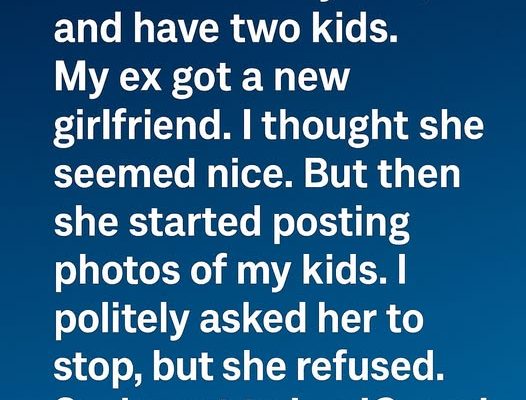As a digital native, I grew up sharing everything. My teenage years were chronicled in painstaking detail across every nascent social media platform. By the time I became a mother, oversharing was second nature. My kids’ first steps, their adorable tantrums, their funny artwork – it all ended up on my feeds, carefully curated with loving captions. I genuinely believed I was creating a beautiful digital scrapbook for them, a testament to their childhood that they could look back on one day.
My husband, Liam, was more private by nature, but even he got swept up in the excitement of sharing our children, Leo and Mia, with our extended online circle. Our friends and family loved seeing their updates, and the likes and comments felt like a warm embrace of our parenting journey.
The first crack in my oversharing philosophy came subtly. Leo, at five years old, started asking why his face was on “Mommy’s phone.” He didn’t quite grasp the concept of the internet, but he knew those pictures weren’t just for us. Then, Mia, at three, burst into tears when I tried to take her picture after she’d spilled juice all over herself. “No, Mommy! Don’t show everyone!” she wailed, her little face crumpled in distress.
It hit me then. I was sharing their lives without their consent. They were too young to understand the permanence of the internet, the potential for their images to be misused or misunderstood, or even just the simple fact that some moments are meant to be private. My digital scrapbook, meant to be a gift, was becoming an invasion.
Liam and I had a long, serious conversation that night. We realized we needed to change our approach. We decided to implement a “digital detox” for our kids’ images. This meant no more photos or videos of their faces posted publicly. We would still take countless pictures, of course, but they would be for our private family album, shared only with a select few trusted relatives through secure messaging, and always with a clear understanding that they were not to be re-shared.
The first few weeks were challenging. My thumb instinctively hovered over the “share” button after a particularly cute moment. I missed the instant validation, the virtual pats on the back from friends. But then, something beautiful began to happen.
Instead of focusing on capturing the perfect shot for an audience, I started living more in the moment. When Leo built an elaborate LEGO castle, I didn’t immediately reach for my phone; I sat down and helped him add turrets. When Mia danced around in her fairy costume, I joined her, twirling and giggling, instead of trying to frame the perfect video.
We developed new ways to share our lives without showing their faces. We’d post pictures of their artwork, their muddy shoes after a hike, their hands building sandcastles, or the back of their heads as they gazed at something wonderful. We talked to Leo and Mia about why we were doing this, explaining the importance of their privacy and their right to decide what parts of their lives were public. They understood, and surprisingly quickly, they embraced it. They started asking us, “Is this just for our family book, Mommy?” before happily posing.
The biggest lesson, however, wasn’t just about protecting their privacy; it was about protecting our connection. By stepping back from the performative aspect of social media, we stepped into our lives more fully. Our evenings were less about scrolling and more about storytelling, about listening to Leo’s elaborate tales and Mia’s imaginative games. Our weekends became adventures lived, not just documented.
One afternoon, Leo came running to me, bursting with excitement. “Mommy, Daddy and I built the best fort ever!” he exclaimed, pulling me towards the living room. There, nestled amongst cushions and blankets, was a magnificent fort, complete with a “secret entrance” and a “no adults allowed unless invited” rule.
“Wow, this is amazing!” I genuinely gasped, my eyes wide with admiration.
Leo beamed. “Can you take a picture for our family book?” he asked, pointing proudly at the fort. “But just of the fort, okay? Because it’s a secret fort.”
I smiled, my heart swelling with pride. He wasn’t asking me to share his face or his moment with the world. He was inviting me to capture a memory, a private joy, for us. I pulled out my phone and took a picture, not of him, but of the fort, a testament to his creativity and our shared, meaningful moments.
Protecting my kids’ privacy taught us all a profound lesson: that the most meaningful connections are built in real life, in present moments, and that some of the most precious memories are the ones we keep just for ourselves, tucked safely away in the album of our hearts.

